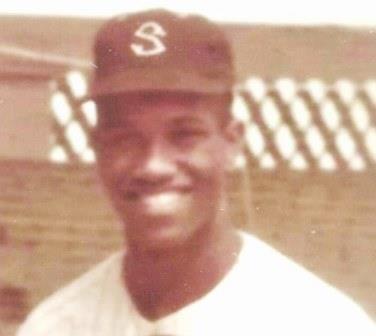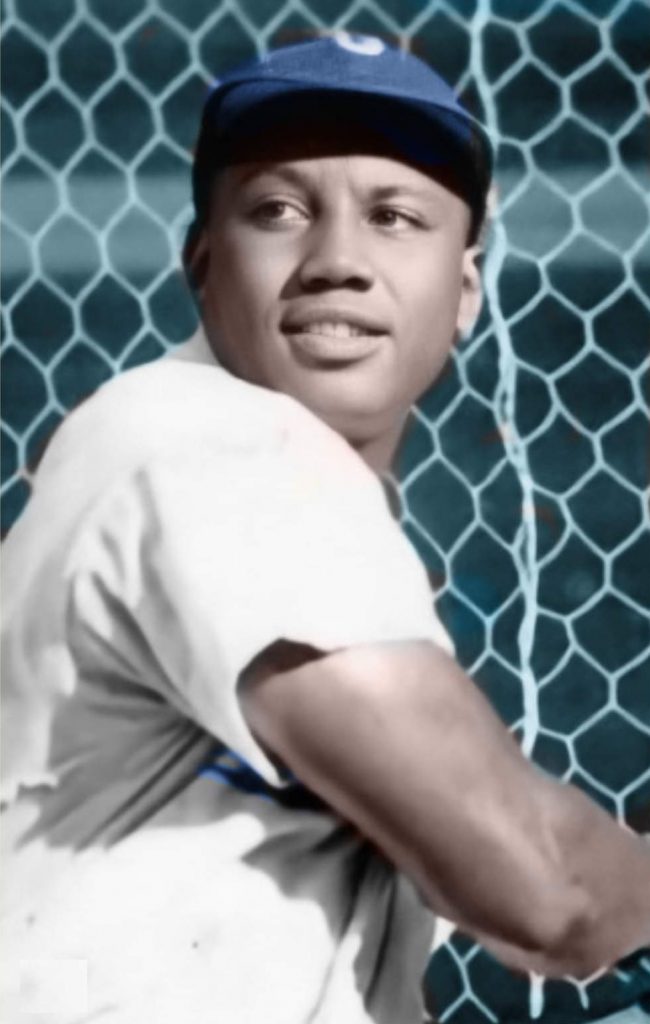
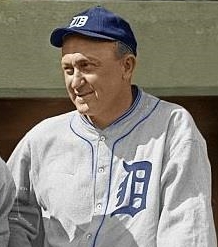
In 1977, the author finished a morning swim at Escambrón Beach, in San Juan’s Puerta de Tierra sector, near renovated Sixto Escobar Stadium, initially completed in 1932 as Escambrón Stadium. He ordered fresh fruit juice and a “bacalaito” (codfish) snack from a nearby food truck when a customer came by for a snack. This elderly tourist from the States passed out a business card with the “world’s greatest salesman who became the BEST by being better than the REST.”
This essay focuses on standard stats, e.g., batting average (BA), and modern ones, e.g., weighted on-base average (wOBA), for two of the best all-time baseball players; players whose careers did not overlap, became the BEST by being better than the REST:
- Tyrus (Ty) Raymond Cobb’s pro baseball career spanned 25 years—1904-to 1928, inclusive; and, Joshua (Josh) Gibson, star-studded seasons, 1930-1946, Negro Leagues, Puerto Rico, Cuba, Mexico, and Venezuela. Most of Cobb’s playing career came in the “Dead Ball” era. Gibson, inducted in Cooperstown in 1972, played in a different era than Cobb, enshrined in Cooperstown’s first class—1936, with Babe Ruth, Honus Wagner, Walter Johnson, and Christy Mathewson.
- Cobb (1886-1961) grew up in Royston, Georgia, Franklin County, 31 miles northeast of Athens, whereas Gibson (1911-1947) spent his formative years in Buena Vista, Georgia, Columbus (Georgia) – Alabama Metropolitan Statistical Area.
- Gibson moved to Pittsburgh, mid-1920s, after completing fifth grade in Georgia. https://sabr.org/bioproj/person/josh-gibson/ He dropped out of school at 15 to work at an airbrake manufacturing plant. Cobb passed away in Atlanta, on July 17, 1961; Gibson in Pittsburgh, on January 20, 1947. Cobb was inducted into the Georgia Sports Hall of Fame in 1964; Gibson in 2003. https://www.georgiasportshalloffame.com/class-of-1964; https://www.georgiasportshalloffame.com/class-of-2003.
- Cobb and ex-heavyweight boxing champion Joe Louis were among six inductees in Michigan’s first Sports Hall of Fame Class—1955. Gibson was enshrined in Pennsylvania’s Sports Hall of Fame, in 1970. Gibson and Cobb were both 6’1” tall; Gibson played at 210 lb. and Cobb at 175 lb.
Both Georgia natives superbly dominated their respective leagues pre-Jackie Robinson’s 1947 rookie season with Brooklyn. Cobb was in favor of Major League Baseball’s integration, per a May 17, 2016 article by Anthony Castrovince, Ty Cobb’s history built on inaccuracies (mlb.com), who wrote:
“We have zero evidence to suggest that Cobb was a racist. He was a Southerner, born in Georgia in 1886, and it has become easy to equate that upbringing to a racist bent. But Cobb’s great-grandfather preached against slavery. His father was an advocate for the public education of Black Americans. And Cobb himself was a vocal supporter of integration in baseball when asked about Jackie Robinson in 1952.” Cobb’s quote:
«The Negro should be accepted wholeheartedly, and not grudgingly,» he said. «The Negro has the right to play professional baseball and whose [sic] to say he has not?»
For more information on Cobb, readers may click his SABR bio: Ty Cobb – Society for American Baseball Research (sabr.org). An excellent book penned by Charles Leerhsen, Ty Cobb: A Terrible Beauty, is required reading and a superb Cobb biography.
Orlando Cepeda Remembers Ty Cobb
Cobb spent time in Arizona, late 1950s, before returning to his native Georgia, to undergo treatment for prostate cancer, in Atlanta. Per a March 14, 2021 blog by Luis R. Mayoral, Cobb, during spring training, 1959, enthusiastically followed San Francisco Giants’ 1B Orlando Cepeda, 1958 National League Rookie of the Year, Orlando Cepeda: preciosas experiencias escondidas en la historia | Beisbol 101, league batting champ, 1958-59 Santurce Crabbers, who won Puerto Rico Winter League (PRWL) title. “I was told Cobb was a racist and a bad person,” noted Cepeda [1998 bio]. But he [Cobb] was good to me; he gave me advice; took me out to lunch, one, day, in his Chrysler Imperial…spoke highly of Willie Mays. I will never forget Mr. Cobb.”
Cobb in Havana, Cuba, his three World Series, and Gibson’s 1942-1945 World Series
Cobb spent a week in Havana, Cuba, November 1910, playing five of 12 games for the Detroit Tigers (7-4-1) against Almendares, Havana, and a Cuban All-Star Team, first—and only—time that Cobb played against Black/Afro-Caribbean players. In five games, he went 7-for-20, with a HR, five RBIs, and one CS. He faced future Cooperstown Hall of Famer José de la Caridad Méndez, Bombín Pedroso, among other hurlers. Cobb’s homer came off Havana’s Pastor Pareda. Havana’s reinforcements included John Henry “Pop” Lloyd, Home Run Johnson, and catcher Bruce Petway. Table I includes Cobb’s five games in Havana.
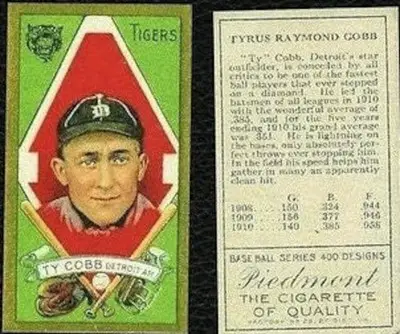
Cobb’s 1911 baseball card, post-1910 Cuba trip. He was the first (1911) AL MVP. Photo credit: https://www.etsy.com/listing/1319868898/1911-t205-ty-cobb-reprint-mint-detroit
Three World Series—1907-1909—are cited in Cobb’s standard stats, plus 1904 and 1905 minor-league seasons with Anniston and Augusta. Per Table I, Cobb didn’t hit well versus the 1907 and 1908 Chicago Cubs, nor 1909 Pittsburgh Pirates. Gibson’s four World Series with the 1942-1945 Homestead Grays, were listed in his career stats, plus other Negro Leagues post-season games, and Caribbean and Mexican League stats. Gibson, too, had mostly sub-par performances in his four World Series, but Homestead won the 1943 and 1944 events. Gibson’s grand slam in Game 5 of the 1943 Series, came in an 11-10 loss to the Birmingham Black Barons. No box score exists for this September 28, 1943 contest; so, this HR is not recorded in Table II.
Gibson’s 1930-1940 and 1942-1946 Negro Leagues stats are MLB ones, due to Commissioner Rob Manfred’s December 16, 2020 decree, giving MLB status to seven Negro Leagues operating between 1920 and 1948. The Mexican League circa 1940 and 1941 was an Independent League but became AA in 1955 and AAA in 1967. The 1940 Blues’ roster included player-manager Martín Dihigo, Barney Brown, Ray Dandridge, Leon Day, Roy Partlow, Lázaro Salazar, Willie Wells, etc. They finished first with a 61-30 W-L record. Then, Gibson nearly won the Triple Crown with Veracruz (67-35) in 1941: .374 BA, 33 HR, 124 RBI, but Bill Wright’s .390 BA for Mexico City Red Devils prevailed. “We also played against each other in Puerto Rico [1941-42] when my San Juan club played Santurce,” said Wright. “What a player!”
Weighted On-Base Average (wOBA)
This formula assigns higher value to extra-base hits (doubles, triples, homers) than to singles or walks; wOBA uses factors (F). Each F is for the specific scoring method it’s being multiplied by.
2021 wOBA = (0.692 x Unintentional Walks + 0.722 x HBP + 0.879 x Singles + 1.242 x Doubles + 1.568 x Triples + 2.007 x HR) / (AB + unintentional Walks + SF + HBP). For more information, wOBA | Sabermetrics Library (fangraphs.com)
Unintentional Walks = 0.692 HBP = 0.722 Singles = 0.879 Doubles = 1.242 Triples = 1.568 HR = 2.007
Aaron Judge’s 2022 wOBA for the NY Yankees was .458—above Cobb’s AL career wOBA of .445, but below Gibson’s .486 wOBA during his career regular seasons in the Negro Leagues, which are now big-league (MLB) status. An “average” MLB wOBA is roughly .320.
Table I: Ty Cobb, Standard Batting & wOBA, 1905-1928 Minors, AL, World Series, Cuba
| Seasons | Teams | AB | R | H | 2B | 3B | HR | RBI | BA | SLG | wOBA |
| 1904-05 | Anniston, Augusta | 546 | na | 166 | 19 | 4 | 2 | na | .304 | .365 | na |
| 1905-28 | Detroit, Phil. A’s | 11440 | 2245 | 4189 | 724 | 295 | 117 | 1944 | .366 | .512 | .445 |
| 1907-09 | Detroit’s 3 World Series | 65 | 7 | 17 | 4 | 1 | 0 | 9 | .262 | .354 | .317 |
| 1910# | Detroit in Cuba | 20 | 4 | 7 | 0 | 1 | 1 | 5 | .350 | .600 | .489 |
| Totals | Minors, Det., A’s | 12071 | 2256 | 4379 | 747 | 301 | 120 | 1958 | .363 | .504 | .444 |
Source: Jorge S. Figueredo, Cuban Baseball: A Statistical History, 1878-1961, McFarland, 2003. Baseball-Reference and Fan Graphs.
Table II: Joshua Gibson, Standard Batting and wOBA, 1930-1946 Leagues
| Season | Teams | AB | R | H | 2B | 3B | HR | RBI | BA | SLG | wOBA |
| 1930-40, 1942-46 | Negro Leagues | 2859 | 745 | 1,033 | 171 | 72 | 195 | 880 | .361 | .676 | .486 |
| 1932# | vs major leaguers | 28 | 10 | 9 | 6 | .321 | .321 | .325 | |||
| 1933-34 | Estrellas de Ramirez | 35 | 10 | 14 | na | na | na | 7 | .400 | na | |
| 1933-34 | Ramirez Copa Mundial | 45 | 9 | 15 | na | na | 1 | 6 | .333 | na | |
| 1934 | Concordia | 14 | 7 | 9 | 2 | 1 | 2 | 8 | ,643 | 1.36 | |
| 1935^ | Crawfords vs Cubans | 31 | 5 | 11 | 0 | 1 | 1 | 5 | .355 | .516 | .405 |
| 1936-37# | Brooklyn Eagles | 28 | 17 | 5 | 2 | .607 | |||||
| 1937 | C. Trujillo | 53 | na | 24 | 4 | 5 | 2 | 21 | .453 | .830 | |
| 1937-38 | Havana | 61 | 11 | 21 | 3 | 2 | 3 | 13 | .344 | .607 | |
| 1938-39 | Santa Clara | 163 | 50 | 58 | 7 | 3 | 11 | 39 | .356 | ,687 | |
| 1939 | Grays vs Phil. Stars | 6 | 1 | 1 | 0 | 0 | 1 | 2 | .167 | .667 | .426 |
| 1939 | Grays vs Balt. Elite Giants | 17 | 3 | 6 | 0 | 0 | 2 | 4 | .353 | .706 | .548 |
| 1939# .. | Grays vs Havana, Almend. & All-Stars | 24 | na | 9 | na | na | na | na | .375 | na | |
| 1939-40 | Santurce | 150 | 39 | 57 | 15 | 5 | 6 | 28 | .380 | .667 | |
| 1940 | Centauros | 37 | 8 | 13 | 3 | 0 | 4 | 10 | .351 | ,757 | |
| 1940 | Veracruz | 92 | 32 | 43 | 7 | 4 | 11 | 38 | ,457 | .968 | .632 |
| 1941 | Veracruz | 358 | 100 | 134 | 31 | 3 | 33 | 124 | .374 | .754 | .540 |
| 1941-42> | Santurce | 123 | 37 | 59 | 12 | 4 | 13 | 43 | .480 | .959 | |
| 1942-45# | Grays’ 4 World Series | 68 | 13 | 14 | 2 | 0 | 1! | 6 | .217 | .333 | .343 |
| 1945-46 | Santurce | 116 | 11 | 22 | 4 | 1 | 0 | 14 | .190 | .241 | |
| Totals | Numerous | 4308 | 1091 | 1569 | 266 | 101 | 288 | 1254 | .364 | .673 | .483^^ |
#Incomplete. !Gibson’s grand slam is not included for Game 5, 1943 World Series: unavailable box score. ^Negro National League II (NNL II) playoff, Pittsburgh Crawfords versus NY Cubans. ^^Composite wOBA reflects Negro Leagues regular and post-seasons, plus two Mexican League regular seasons. It was .560 for the latter; .486 for Negro Leagues’ regular season play. >Does not include Gibson’s two HR, Game 2, January 1, 1942, PRWL All-Star Game. Sources: Miguel Dupouy Gómez for Centauros de Maracaibo (Venezuela). Jorge S. Figueredo, Cuban Baseball: A Statistical History, 1878-1961, McFarland, 2003. Jorge Colón Delgado for Estrellas de Ramírez, Copa Mundial, Brooklyn Eagles in Puerto Rico, Santurce Crabbers. Gary Ashwill and Larry Lester, Seamheads.com Negro Leagues Data Base. Negro Leagues World Series was played in many different cities. In the 1942 classic between the Kansas City Monarchs-Homestead Grays, no games were played in Kansas City!
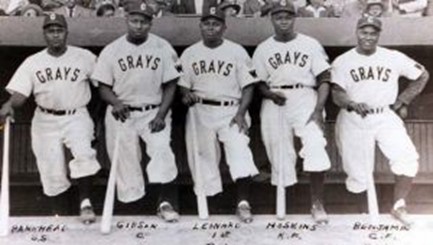
Gibson’s Leadership Qualities
Per Jorge Colón Delgado, Gibson was the captain, of 1933-34 Estrellas de Ramírez team. They wintered in Puerto Rico, featuring Gibson, Dick Seay, Ted Page, Rap Dixon, among others.
1933-34 Estrellas de Ramírez Ballclub, Puerto Rico
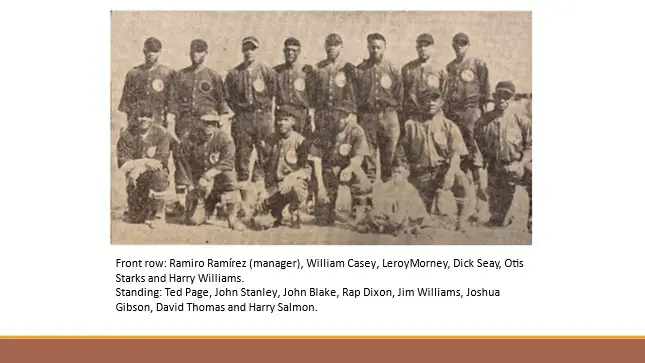
Gibson with 1934 Concordia Eagles
Historian Miguel Dupouy Gómez chronicled Concordia Eagles’ exploits, a team based in Venezuela. Their 1930s players included Luis Guillermo Aparicio Ortega “El Grande”—father of stellar AL shortstop Luis Aparicio—Rap Dixon, Tetelo Vargas, future Cooperstown Hall of Famers Martín Dihigo, Gibson, and Johnny Mize. Concordia was the first Venezuelan ballclub to travel abroad. In 1934, they won six of nine versus Escogido Lions and Licey Tigers, Dominican Republic. On July 19, 2020, Miguel Dupouy Gómez published an excellent blog: Joshua Gibson: El Babe Ruth de las Ligas Negras (Josh Gibson: The Babe Ruth of the Negro Leagues). Béisbol Inmortal: Joshua Gibson: El Babe Ruth de las Ligas Negras (beisbolinmortal.blogspot.com)
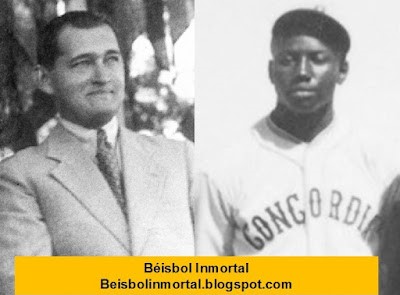

Per historian Jorge Colón Delgado, Gibson played three games for Concordia, at Escambrón Stadium, March 10-11, 1934. The second game was the a.m. contest, Sunday, March 11, versus Almendares. Gibson’s 6-for-6 performance included 16 total bases. He batted clean-up behind Dixon, and in front of Dihigo.
1936-37 Brooklyn Eagles and 1937 Dominican Republic League
Gibson managed a talented Brooklyn Eagles ballclub in Puerto Rico, the winter he turned 25. Those Eagles were 15-4-2. Then he was recruited by Satchel Paige to help Ciudad Trujillo Dragons win a three-team tournament that ended on July 11, 1937, against Águilas Cibaeñas (AC), based in Santiago, and Estrellas Orientales (EO), in San Pedro de Macoris. Ciudad Trujillo is Santo Domingo. Paige made $600/month with the Pittsburgh Crawfords and $6,000 for his 1937 season with the Dragones. He contacted Gibson in San Juan, per Mike Viago’s blog https://www.avclub.com/in-1937-a-dictator-assembled-a-baseball-team-for-the-a-1823978045. Paige needed Gibson’s bat in the line-up and made the catcher a substantial cash offer, to join Sammy Bankhead, Cool Papa Bell, Rodolfo Fernández, Silvio Garcia, Leroy Matlock, Bill Perkins, and Lázaro Salazar.
Gibson missed the first two months of play; went hitless in his first 12 AB, finishing with 24 hits in 53 AB, a .453 BA, four doubles, five triples, two homers, and 21 RBI. His BA, RBI, and .830 SLG led the league. The 18-13 Dragones qualified for best-of-seven finals against second-place AC (15-17). Gibson’s five triples tied him with teammate Lázaro Salazar for the league lead. Matlock (4-1) and Satchel Paige (8-2) were the Dragones’ top hurlers. Rosters were fluid. Perucho Cepeda, Orlando’s father, was with Ciudad Trujillo but departed early. George Scales, EO 2B, and OF-IF Tetelo Vargas, starred for EO.
Perucho Cepeda: The “Ty [not Babe Ruth] Cobb” of Puerto Rico
Myron Cope wrote a fine article in Sports Illustrated’s May 16, 1966 edition, on Perucho, eight days after [son] Orlando was traded by San Francisco to St. Louis. Cope’s key comment was: “If an analogy must be drawn, Perucho was the Ty Cobb of Puerto Rico.” Cope added: “Twice [in Puerto Rico] he hit better than .400. Unlike Ruth, he did not hit the cuadrangular often, but he rattled the fences with line-drives doubles and triples. He also rattled the jaws of opposing players and fans with lefts and rights.” https://vault.si.com/vault/1966/05/16/the-babe-cobb-of-puerto-rico
Joshua Gibson played the Most Difficult Position–Catcher
Without question, Gibson was the most dominant hitter in the Caribbean and Negro Leagues, despite playing the most difficult position—catcher. His dominance continued with 1937 Homestead Grays after he was sold/traded to them in the States. In 39 games for the Grays, he went 65-for-156, with 13 doubles, 7 triples, 20 homers, and 73 RBIs. His slash line was: .417/.500/.974, a 1.474 OPS, and .586 wOBA!
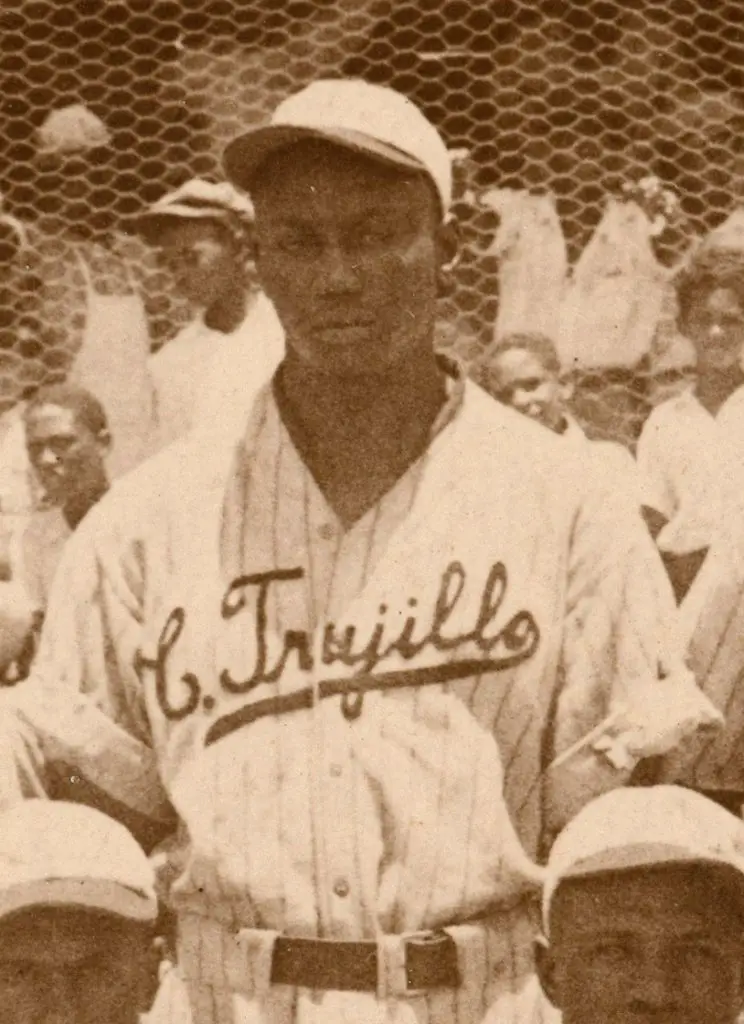
Cuba, Puerto Rico, and Venezuela for Gibson
Gibson played a partial 1937-38 season with the Havana Reds, who withdrew from Cuba’s Winter League at 8-38, and forfeited their next 20 games. Gibson went 21-for-61, a .344 BA, with three doubles, two triples, three homers, 13 RBIs and .607 SLG. Santa Clara’s Raymond Brown slugged four HR in 86 AB to tie for the league lead with Almendares’ Willie Wells and Roberto Estalella. In 1938-39, Gibson joined the Santa Clara Leopards, league champs (34-20), behind the hurling of Manuel “Cocaína” García (11-4) and Raymond Brown (11-7), plus Gibson, with a league-leading 50 runs and 11 homers in 163 AB. Those 11 homers set a league record.
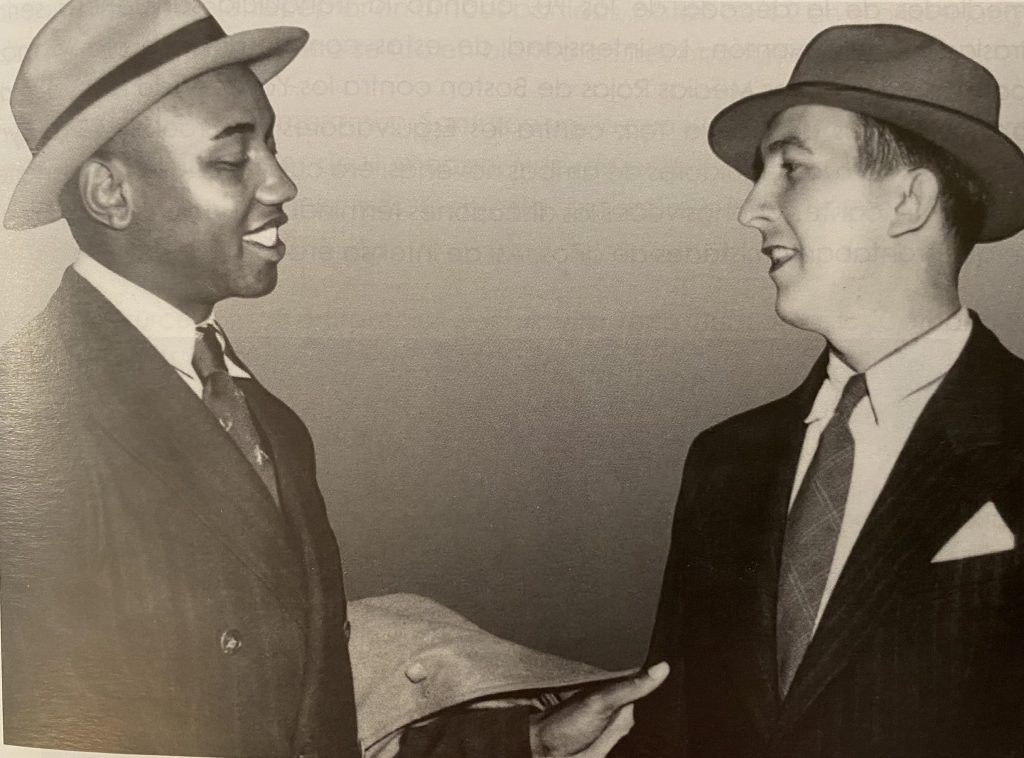
In 1939-40, Pedrín Zorrilla, owner—Santurce Crabbers, chose Gibson to manage them in their maiden season. They were 26-29 overall, and 24-25 under Gibson, whose .380 BA was second to Guayama’s Perucho Cepeda (.383), in the PRWL. Two years later, Gibson had a .480 BA for the Crabbers, with 13 HR and a .959 SLG, in 123 AB. Guigo Otero Suro, Santurce executive, recalled playing pick-up basketball games with Gibson and other league players. Gibson was fond of eating batata (sweet potato) and drinking the Island’s rum and beer, at times. He homered twice in Game 2, January 1, 1942 PRWL All-Star Game, for the Northeast squad. His first blast came off Leon Day of the Aguadilla Sharks, pitching for the Southeast team.
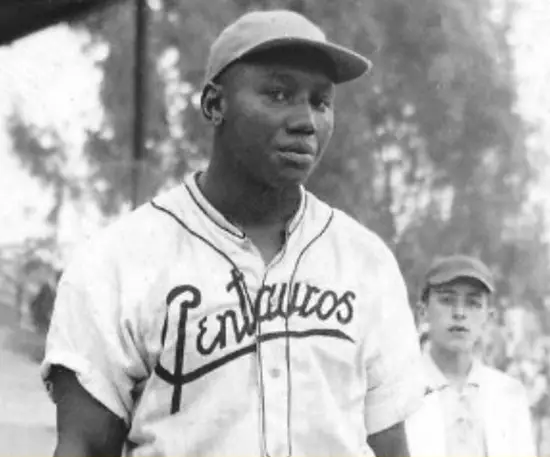
Juan Vené was 11 years old when Gibson hit a long HR for Centauros in Venezuela. (Gibson and Leon Day departed from Puerto Rico to Venezuela with a week left, 1939-40 season.) Vené’s godfather was Miguel Antonio Rivas, owner of San Agustín Stadium, southern Caracas where Centauros played home homes. “I would see Gibson and other American players at a hotel in Caracas,” recalled Vené. “Gibson was a joy to watch…he could hit the ball a mile.”
In 1996, Gibson was inducted into the Puerto Rico Professional Baseball Hall of Fame. Other 1996 inductees with a Santurce connection were: Raymond Brown, Buster Clarkson, Satchel Paige, Tony Pérez, and George Scales. Two years later, Jim Rivera—ex-big leaguer who starred in the PRWL with Caguas, in the 1950s and early 1960s—was pleased when the Ty Cobb Museum opened in Royston, in July 1998. “I donated to this project,” said Rivera to the author. “My aggressive base-running and overall play were patterned after Cobb. I dealt with setbacks and overcame them…was happy the Cobb Museum became a reality.”
Post-Script
The author spent his first two years of college (1973-75) in Rome, Georgia, at Berry College, and transferred to the University of Georgia-Athens (UGA), for his Junior-Senior years. He earned work-study money at Berry doing cattle branding and Spanish tutoring for students in Dr. José Montero’s Spanish classes. One student tutored was Susan Veal, of Royston, who knew about Cobb’s legacy. The author found out that Cobb practiced with the Georgia Bulldogs football squad, to keep in playing shape, in his off-season, and was good enough to be a first-string halfback for them. In 2008, Dr. Montero, a native of Spain, passed away in Doraville, Georgia. He became an orphan during the 1936-1939 Spanish Civil War and was a Priest in, Franciscan Order, from 1958-1970. In 2009, the author and his wife visited Royston’s Ty Cobb Museum.
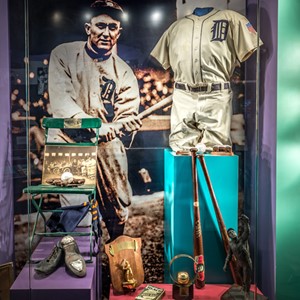
Special thanks to Jorge Colón Delgado for ongoing research on Gibson in Puerto Rico: Estrellas de Ramírez, Concordia and Brooklyn Eagles. Miguel Dupouy Gómez’s blogs on Venezuela’s baseball history were helpful. Thanks to Luis R. Mayoral for securing input from Orlando Cepeda on Cobb; Juan Vené, for memories of Gibson with Centauros; Bill Wright—quote on Gibson in Mexico and Puerto Rico; Guigo Otero Suro, on Gibson with Santurce; Jim Rivera for insights on Cobb’s toughness. Jorge Colón Delgado, Official Historian, Roberto Clemente Professional Baseball League, did the editing-photo placements.
